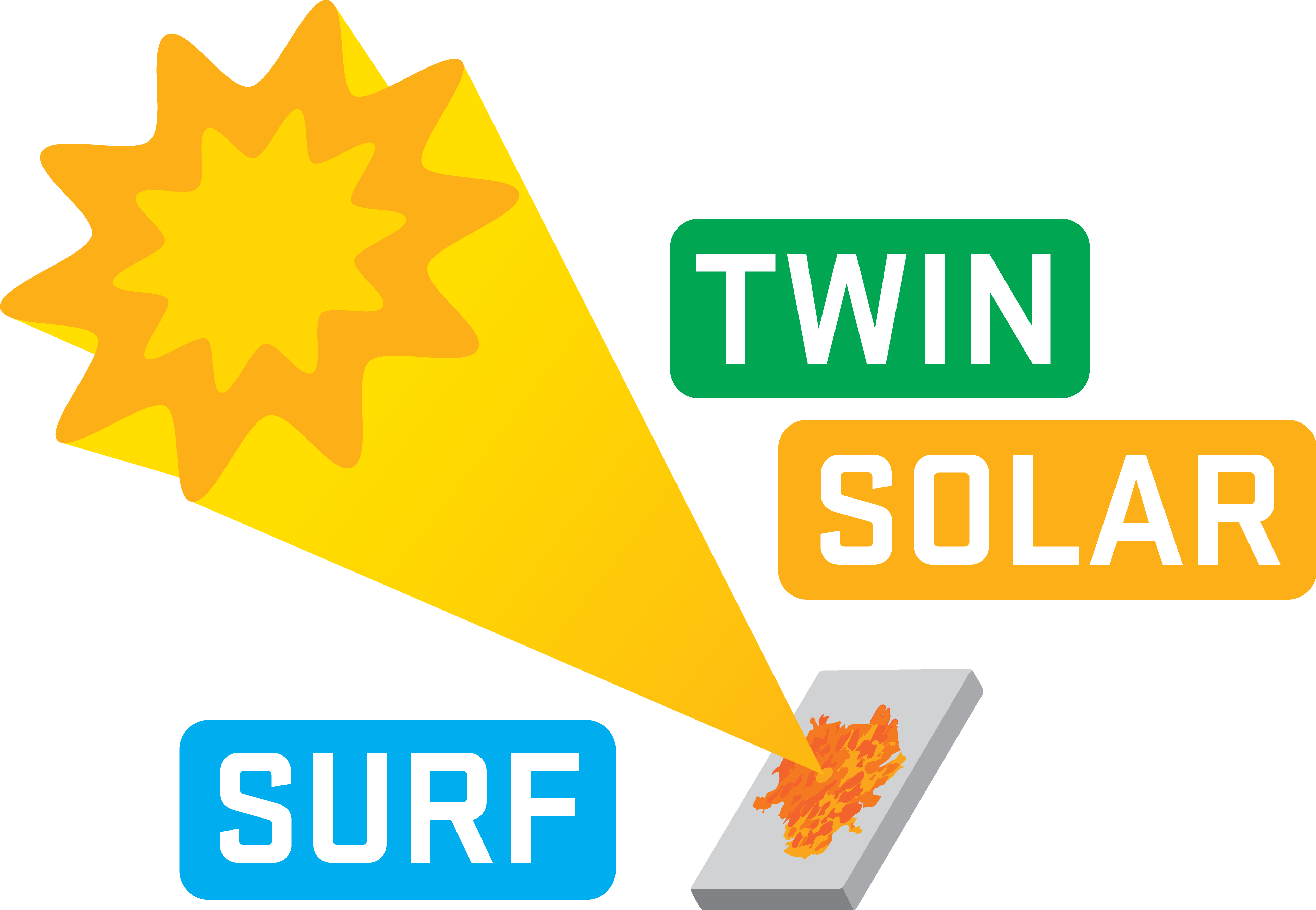The scientific concept and approach set forth in TWINSOLARSURF are multi-disciplinary, combining knowledge from the fields of manufacturing (surface layers elaboration), materials engineering (composites and ceramics), materials’ performance (contact mechanics, thermal fatigue), numerical analysis (heat transfer during elaboration and operation) and concentrated solar thermal technologies.
These complementary aspects will be synergistically exploited to thoroughly understand the fundamental phenomena taking place when applying Concentrated Solar Energy technologies for Surface Engineering applications and to propose and develop reliable methodologies to bridge the gap between these two areas towards an integrated Green Metallurgy and Manufacturing approach for our future ecosystem.
Elaboration Techniques
- Surface processing techniques: applications on the protection of metallic parts from abrasive wear or the increase of their service lifetime under fatigue, thermal fatigue and/or corrosion conditions.
- Surface enhancement of metals: achieved via surface modification or coating deposition.
- Surface modification of metals: cladding via Concentrated Solar Energy (innovative), Arc melting (conventional).
- Slurry coating: easily-applied technique for protective coatings.
Materials
- Hardfacing layers: dispersion of metal carbides in metallic matrices for wear-resistant surfaces.
- Thermal barrier coatings: oxides of multivalent metals for the thermal protection of metallic parts.
Characterization – Testing – Simulation
- Microstructure: optical and/or electron microscopy, X-ray diffraction (XRD), X-ray Photoelectron Spectroscopy (XPS).
- Testing: micro-hardness distribution, sliding wear, abrasive wear, cavitation-erosion, electrochemical corrosion, thermal fatigue, spectral absorbance.
- Simulation: Finite Elements Analysis of thermal and stress fields.


